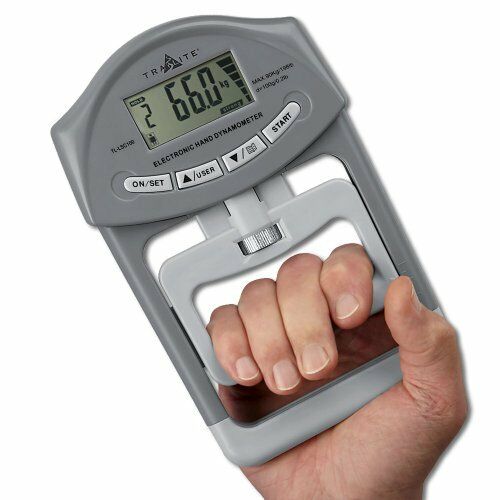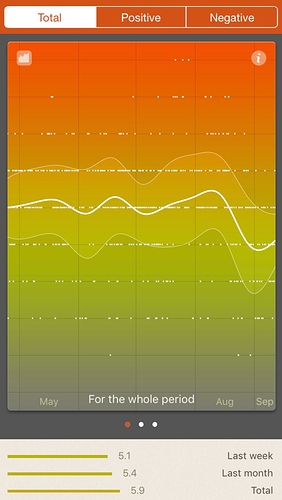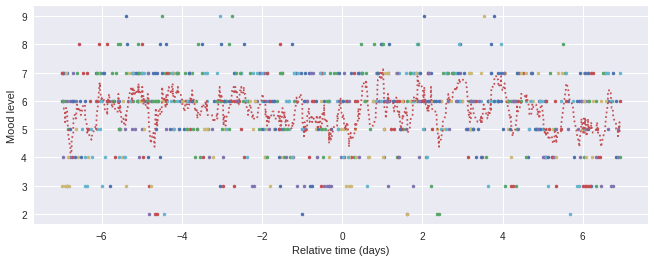As of the start of 2018 I identify as non-binary: neither female nor male. Recently, I started taking testosterone. When deciding to do this, I benefited a lot from reading and watching information others shared.
I’d like to record what’s happening, in turn: to understand the effects on myself, share insights with others, and potentially help inform someone considering a similar choice in the future. 
About testosterone therapy
I started therapy on August 14th with 0.15 ml of 200 mg/ml testosterone cypionate, which I take via intramuscular self-injection once a week. It’s standard to start with a lower dose, to check tolerance; trans men typically move to 0.3 to 0.5 ml weekly. I might go to “full dose” so after three months, I might stay at “low dose” – no rush to decide.
The half life of this drug is 8 days. That means I experience a weekly cycle: each dose I’m jumping from 50% to 150%. (Trans men sometimes dose every two weeks, but often report that this cycling significantly messes with their emotions.) I do worry a bit about and the “erratic” absorption reported for IM injections. On the other hand, cis men’s T varies a fair amount over the course of a day, so maybe it’s not so unusual to have this level of variation biologically (just predictable, in my case).
What I knew to expect
Testosterone generally acts like puberty does for cismen, but much more artificially. The results vary individually, but include: lower voice, beard and body hair, and (potentially) male pattern baldness, increased strength, and redistribution of fat – overall, resulting in a more masculine appearance.
There are potentially emotional changes, effects on mood, especially around the dose cycle. And there are sexual changes (physical and behavioral) that I’m probably not going to discuss much here.
Some effects are “permanent”: they will remain if I stop T (voice change, new hairs, and hair loss). Others would likely revert (fat distribution, skin texture, emotional changes).
About me
I think folks might be curious about the context – so here’s a bit. I’m 40, I was born female, I’ve identified as heterosexual, and I started to ID non-binary at the start of 2018. I’m married to a cis male guy, and we have three kids – all starting as male, coincidentally! The youngest was born last December, and was conceived knowing I was considering T. (We decided it was better to do it in this order; T has to be stopped to allow pregnancy, and might affect fertility.)
I also recently lost a bit over 60 pounds between December 2017 and this summer (BMI 33 → 23). (I did take a break for the pregnancy!) I think my gender identity and transition probably helped motivate that.
What I’m doing to track
So far I’m recording the following daily (or attempting to):
- Using my phone to take a photo of my face: I go against a white wall and hold it straight in front of me to try to get a standard position.
- Using my phone to record my voice daily, and daily notes. I’m using a survey I created for myself in surveylex, recording myself saing “aaaah”, a couple phrases, singing highest/lowest notes.
- My daily survey also has a 30 second response to the question “How are you feeling?” which I’m using to note various changes as I notice them.
I’m also:
- Taking occassionally longer videos, just holding the phone
- I took a photo of my legs
- I’m hoping to share observations and learnings in this project log
It’s been three weeks already, and I’ve noticed various changes. I’ll share those in an update post on this topic. Feel free to ask questions! I don’t feel much dysphoria, I like learning in this process, and I enjoy sharing this process.





 ).
).